The word “Rajgir” has been derived from the phrase “Raj Griha” means the house of King. On 7th Century BC, Rajgir was the capital of Magadha. It became the capital of Magadha. It became a major Buddhist hub during the regime of King Bimbisara (543-491 BC) and his son Ajatashatru (491-459 BC) as prophet Tathagata (Gautama Buddha) spent a long time there. Later the town’s popularity was waned when the capital was shifted to Pataliputra (Patna).

Now a days, tourists from across the world came to visit the ruins, Vishwa Shanti Stupa and to enjoy the cable car ride. People of Buddhist religion come here for pilgrimage as it is a major town in Buddha Circuit.
History of Rajgir:
As I said earlier, Rajgir was the capital of Magadha from the period of King Bimbisara to King Udayin (459-440 BC).
Prophet Tathagata came here twice in their time. First he came when he was prince Siddhartha, before attaining enlightment. Second time he came to Rajgir and spent a long time during the regime of King Bimbisara. Then he taught lessons to his followers.
Rajgir has association with the epic Mahabharata. In Mahabharata, this place is called as Girivraja and recounted the story of King Jarasandha, and his battle with Pandavas.
My day out at Rajgir:
I visited Rajgir from Bodh Gaya and after checking in to hotel I went to Nalanda and on returning back, I visited to Kakolat Waterfalls. I would like to suggest the readers to visit Kakolat Waterfalls. My travelogue of Kakolat Waterfalls is written here.
Due to hectic schedule of the day we went to bed very early and decided to wake up early as there are many places in Rajgir to enjoy.
According to the plan, we got up very early on next day and booked a “Tonga” (a wooden car pulled by horse). My suggestion to the readers is to make sure the tonga puller will take you to Jarasandh Ka Akhara and will go to Ghora Katora Lake. Usually tonga-pullers avoid going in these spots by making lots of excuses. The charge of tonga is near about INR 1300.
At the very beginning I would like to mention that the city Rajgir is in a valley surrounded by seven hills – Vaibhara Giri, Ratna Giri, Saila Giri, Sona Giri, Udaya Giri, Chhatha Giri and Vipula Giri. In Sanskrit, the word “Giri” means hill.
We started at 8am and said the tonga-puller that Cyclopean Wall, Venu Van could be skipped as they are not that much interesting.
First our tonga took us to Maniyar Math.
Maniyar Math:
Maniyar Math is located at the center of Rajgir and more than 5000 years old. Based on some “Pali” text, its cylindrical brick structure has been recognized as “Manimala Chaitya” (the center of Yaksha). Based on the Mahabharata, the identification of Rajgir was as the sacred adobe of Naga. Excavation revealed terracotta serpents that vowed the belief of the worship of Naga (snake) at that place.
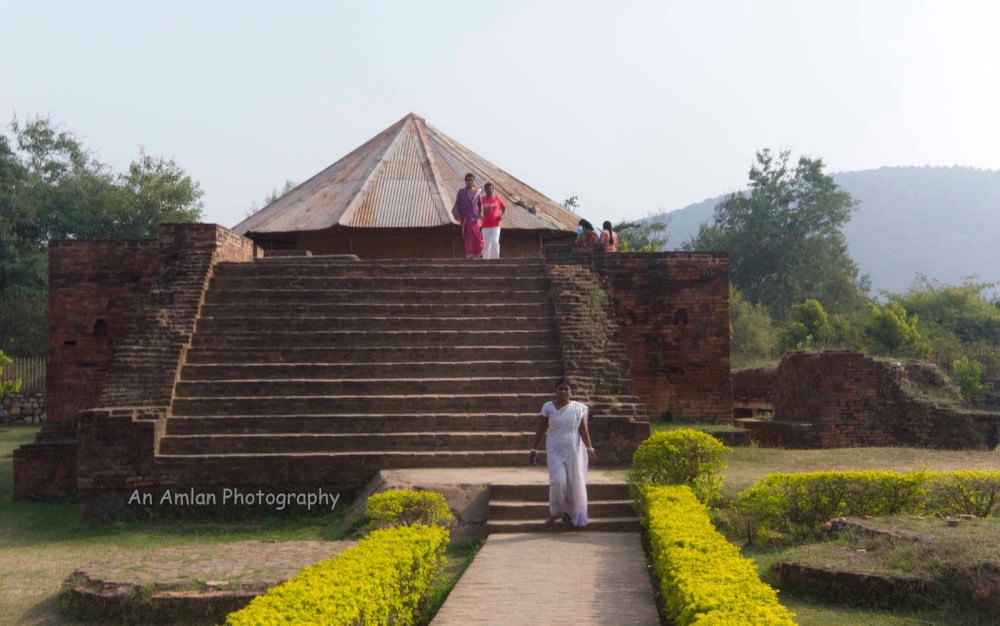
Son Bhandar:
The road that leads to Son Bhandar and Jarasandh Ka akhara is deviated from the main road at Maniyar Math junction.

Son Bhandar means the “Hoard of gold”. Historians confirmed that two caves were constructed by Jain ascetic Vairadeva at the foot of Vaibhar Hill in the 3rd or 4th century CE for monks to meditate in.
Legends say the name Son Bhandar was given by the King Jarasandha as the caves contain hidden gold. The undeciphered scripts written in the wall are believed to be the password to open the door.
Archeologists wanted to break the layer of rocks but it might cause a severe damage to Vaibhar Hill and the hot spring could have been affected as the hill is the source of sulpher for the hot spring.
So let the gold to be kept there, let’s concentrate on the sculpture of the cave. The condition of the sculpture is not well now a days. We spent some more time with the sculptures and came out for Jarasandh Ka Akhara.
Jarasandh Ka Akhara:
Keeping Son Bhandar at the right side, we entered into the forest for Jarasandh ka Akhara. Again the driver showed his reluctance as it is strictly prohibited to go to that place without a covered vehicle like four wheeler. The forest is bit dense and the road crosses game tracks. But we were ready to take the risk so “somehow” I managed the tonga puller and visited the akhara.

According to the Mahabharata, this is the place where Jarasandh and Bhima (2nd pandava) fought for one month. The battle ended with Bhima subduing Jarasandh.

Today a broken brick structure is there as the witness of that legend. But the scenic beauty and calmness impressed us a lot. We stayed there for some time to enjoy the greenery and silence but suddenly a noise of howling broke the silence and within a while we ridded the tonga and tonga puller pulled the car very fast to go out of the forest. Later he said it was either a fox or big cat. At that moment I understood why he was unwilling to go there. But still I suggest the honorable readers of the post to visit that place.
Our next destination was Visha Shanti Stupa. On the way to that an almost ruined archeological remain of Bimbisara jail can be seen.
This is the place where the unfortunate father King Jarasandh was imprisoned by his son Ajatashatru as King Bimbisara was a patron of Buddhism. Hindu priests conspired with Ajatshatru for preventing the popularity of buddhism. While prisoned, King Bimbisara stared at Griddhakuta Hill to see Prophet Buddha meditating. Later Ajatashatru became a patron for Buddhism.
I suggest not spending more than 5 minutes in this place as there is nothing to see so we asked our tonga puller to take us to Vishwa Shanti Stupa.
Vishwa Shanti Stupa:
This is the main attraction of Rajgir that was built in 1969. People from across the world come to Rajgir for this place. This is holy place for Buddhists.
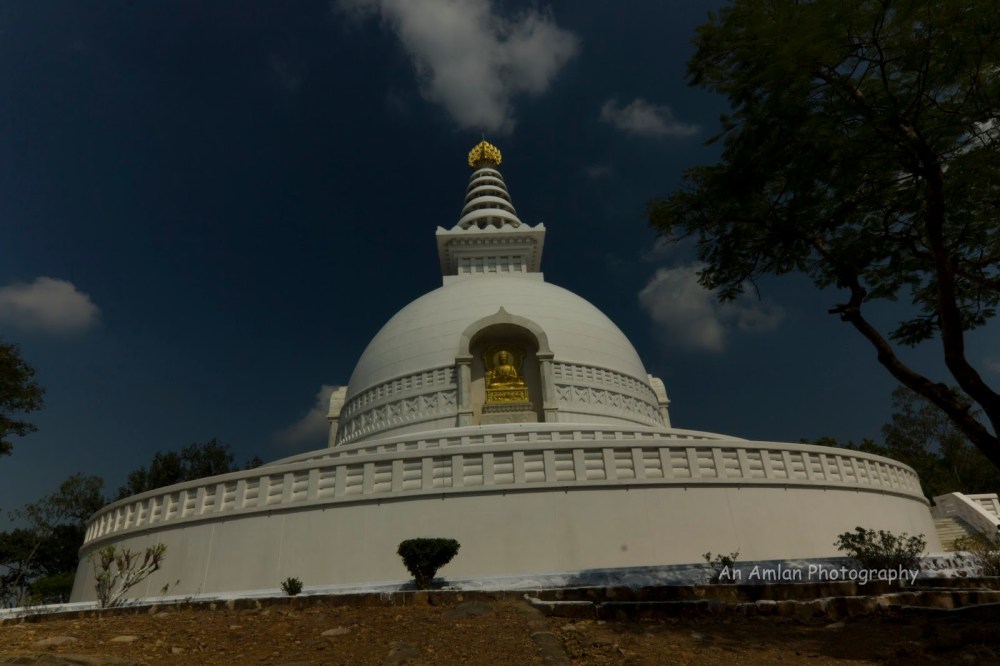
Located on the top of Ratnagiri Hill, Vishwa Shanti Stupa can only be reached by cable car. Enthusiasts can go by trekking. I would suggest going there by cable car and coming down by trekking as ridding cable car is the most exciting part of the tour. The cable car contains a single chair and it is advised to sit properly.

Vishwa Shanti Stupa is made of Marble and has four statues depicting four stages of Prophet Buddha – Birth, Enlightment, Teaching and Mahanirvana (Passing away).
Lots of votive stupas, chortens can be seen in this place. Honorable readers, please have ample time to enjoy this place. This is the highest point of Rajgir so a top view of the town can be seen from this place.

Sutra Stupa of Saddharma Pundarika Sutra is also a nice structure to see.
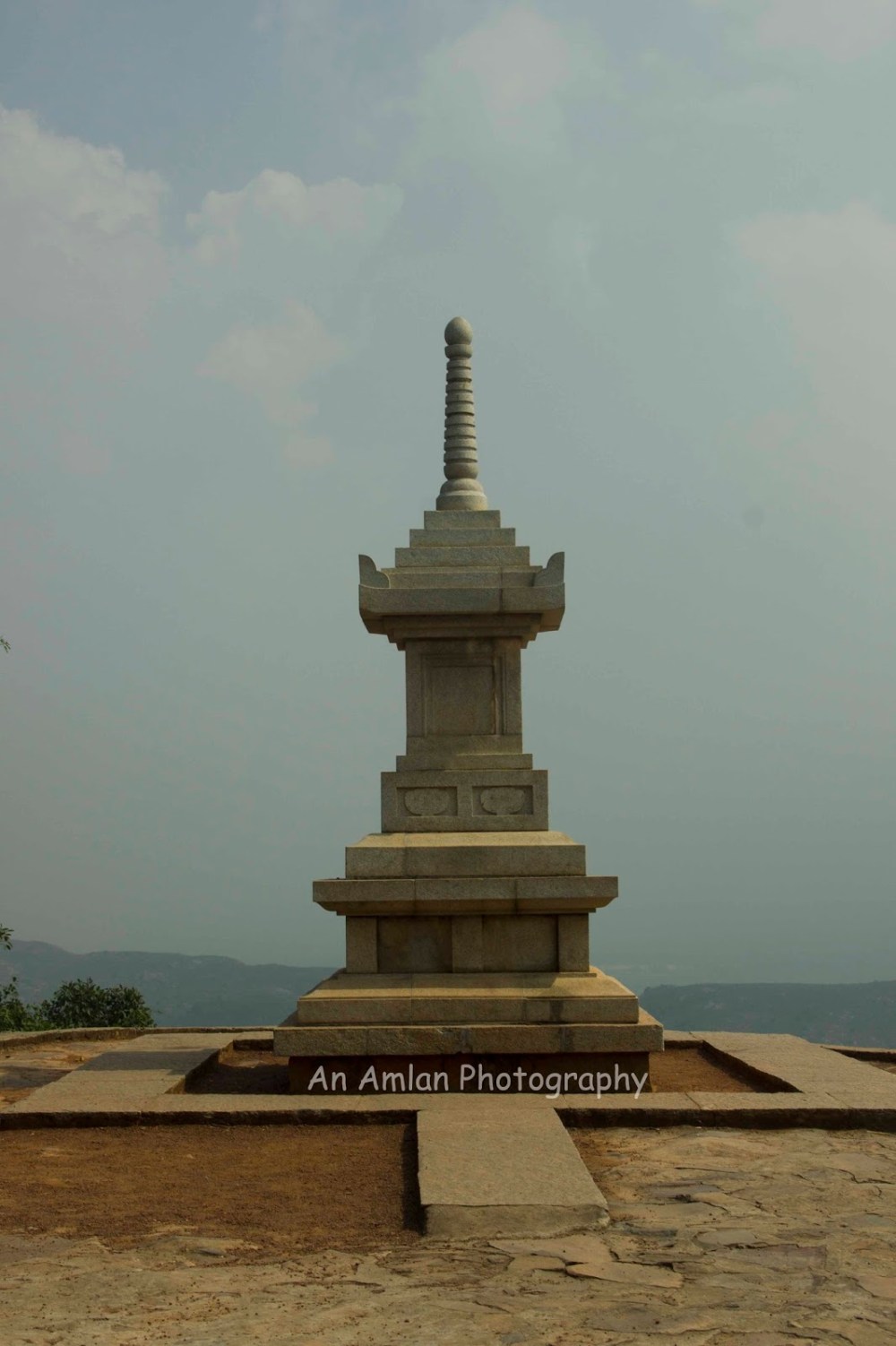
After spending more than two hours we started trekking down. While trekking, we saw the vulture peak of Griddhakuta Hill.
Griddhakuta Hill (Vulture Peak):
I am not sure how people go there but personally I could not see any route to go to Vultures Peak. Trekkers might go there by trekking but there is a dense forest under the peak.
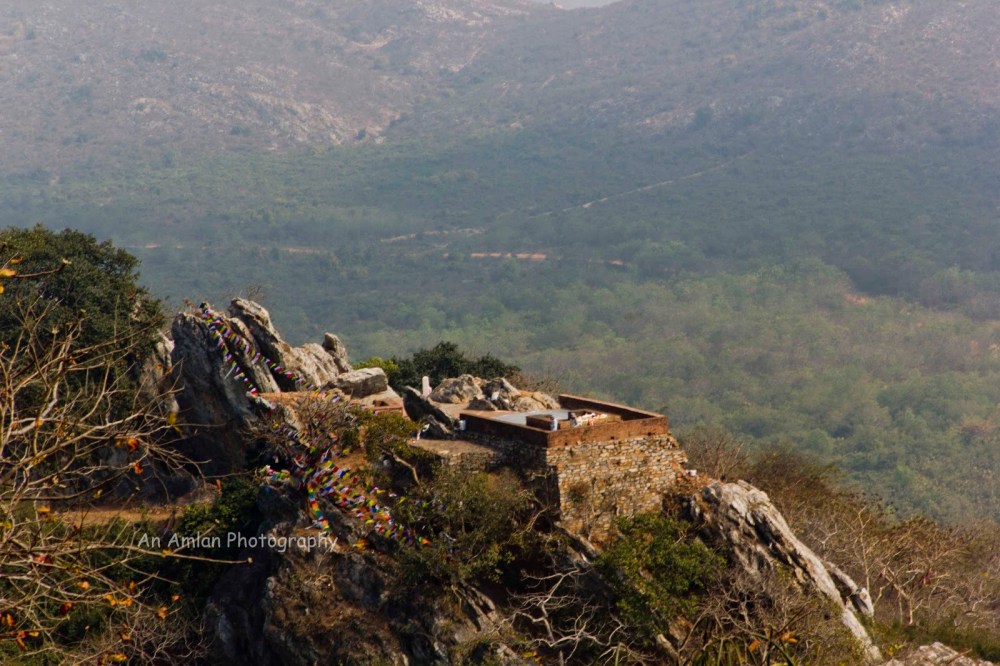
This is the place where Prophet Buddha meditated and taught the lessons to his followers. Right now some prayer flags and vultures can be seen.
We trekked back and hand some snacks as we were hungry. Then we started for Ghora Katora Lake by tonga.
Ghora Katora Lake:
The most romantic journey to Ghora Katora Lake is through a beautiful trail. Ratnagiri and Khandagiri hills bless the tourists with their beauty.

Ghora Katora means “bowl of horse”. Though artificial but this is the most beautiful place of Rajgir. Couples come there to enjoy some quality time. We enjoyed boating there.
Now it was the time to come back to hotel. Returning on the same route we saw Jeevak Amravan.
Jeevak Amravan:
Actually there is nothing to see except a forest of mango trees. Jeevak Kumarvritya, a contemporary of Prophet Buddha, is considered to be an historical doctor. His home was inside the mango groves. A hospital has been constructed after his name.
Bramha Kund (Hot spring):
Our last spot was Bramha Kund (Hot spring). This is a sacred spring for Hindus. Devotees come there for bathing. Separate bathing place and change room is there for male and female.
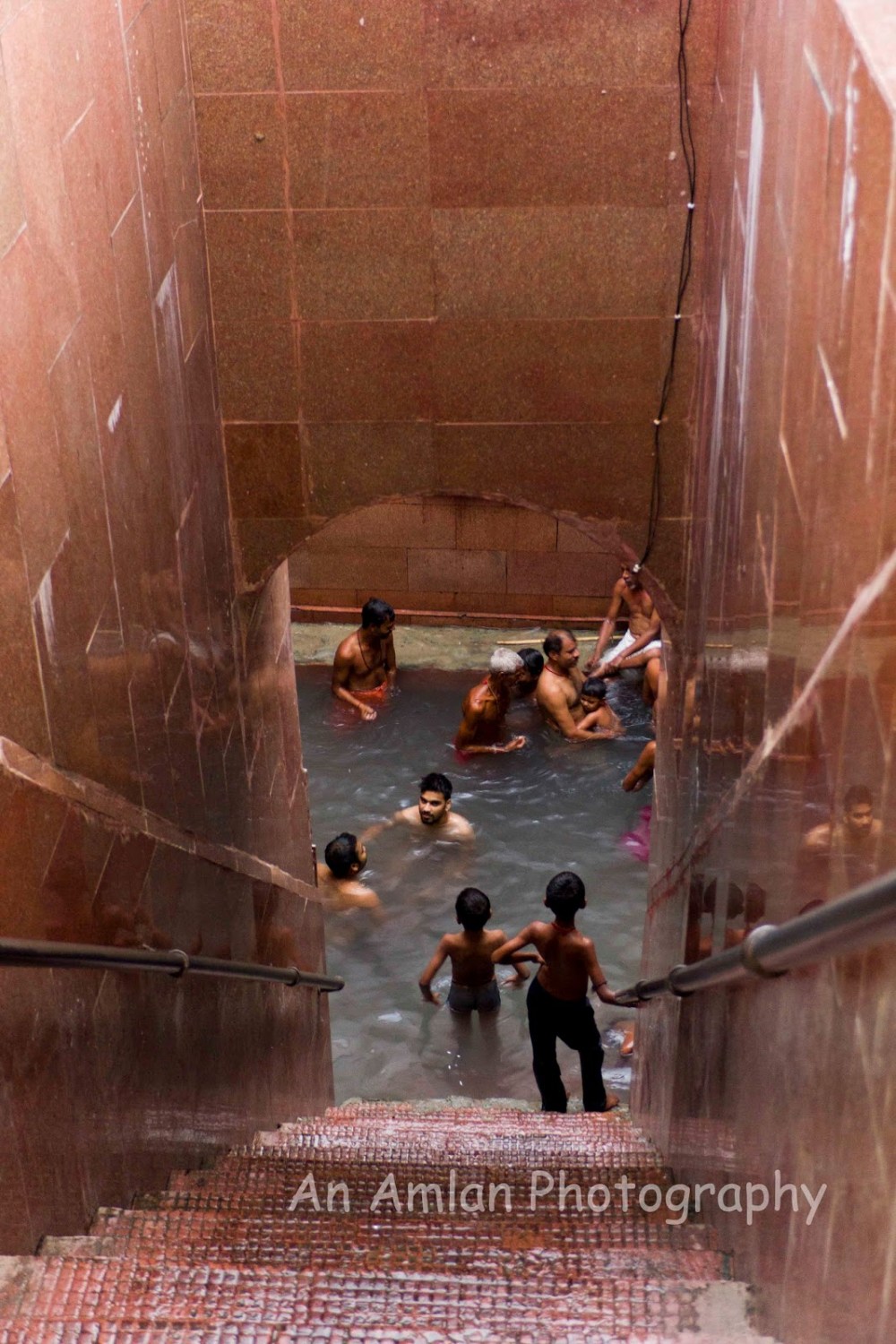
From Bramha Kund, we came back to hotel, had lunch and started by car for Bakhtiyarpur to get the train for Kolkata. Enthusiasts can stay there for another day and enjoy some hiking to Ratnagiri Hill, Udaygiri Hill
Going:
Rajgir can be reached from Gaya and Patna by Bus or Car. Nearest rail station is Rajgir. But actually Bakhtiyarpur is the popular rail station nearest to Rajgir. Nearest airport is in Patna.
Staying:
There are lots of hotels in Rajgir. Tourists can choose according to his/ her budget.



such a historically rich place…loved the information and pictures shared 🙂
LikeLike